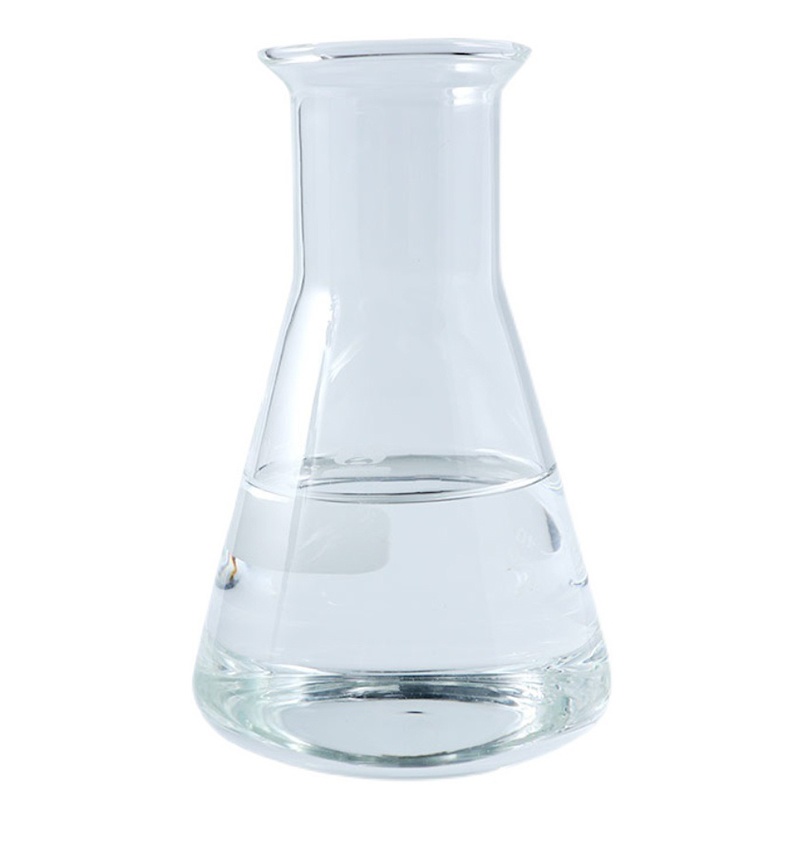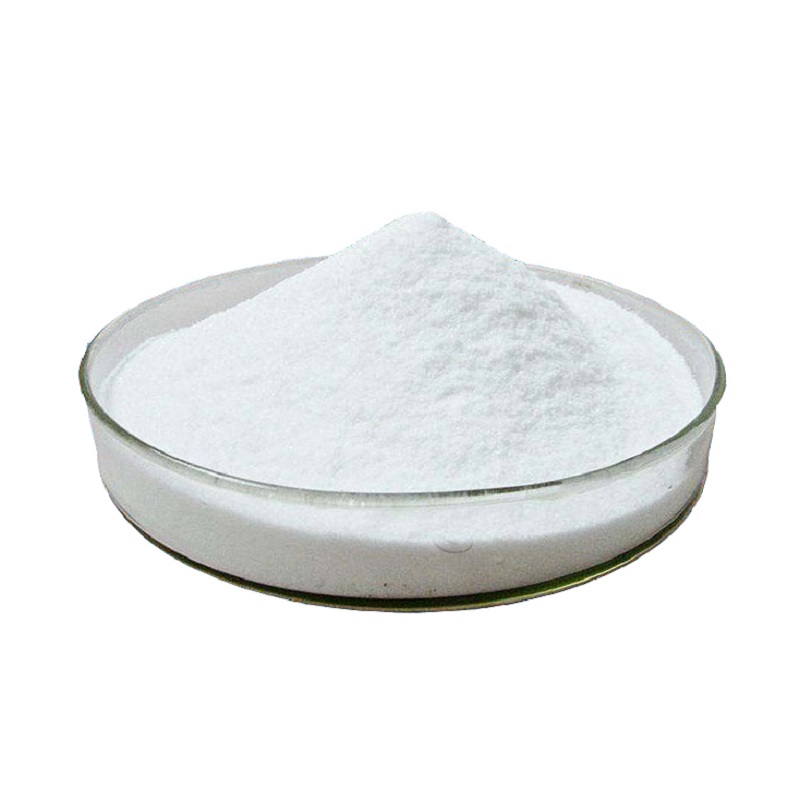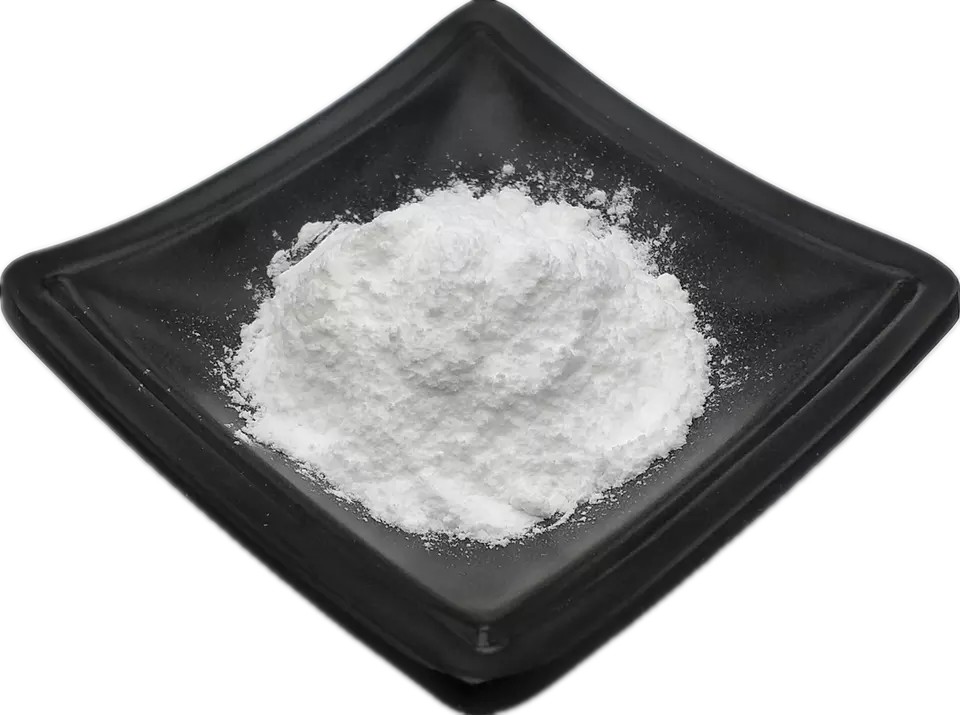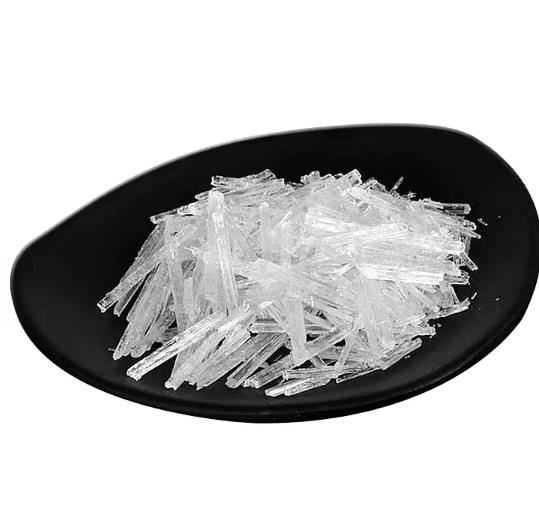

Pyruvic acid CAS 127-17-3
——————
CAS number : 127-17-3
molecular formula : C3H4O3
EINECS : 204-824-3
——————
Email : info@deshangchem.com
Mobile : +86-13153039501
TEL : +86-531-88752665
CAS number:127-17-3
molecular formula:C3H4O3
molecular weight:88.06
EINECS number:204-824-3
English synonyms
2-oxo-propanoicaci;CH3COCOOH;Propanoic acid, 2-oxo-;PYRUVIC ACID, GR 99%;ACID PYRUVATE;PyruvicAcidForSynthesis;PyruvicAcid,FreeAcid;Pyruvic acid, extra pure, 98%
Related categories
Biochemical reagents; synthetic flavors; organic chemical raw materials; cell biology-cellular oxidative stress; reference substances; food additives; edible flavors (flavor enhancers); natural equivalent flavors and artificial flavors; benzimidazole fungicides; pesticide intermediates ;Fungicide intermediates;Carbonyl compounds;Pharmaceutical intermediates;Flavors and fragrances;General reagents;Carboxylic acids;Organic chemical raw materials;Raw materials;Standard products-Chinese medicine standard products;Chemical intermediates;Standard products;Chemical materials;Chinese medicine reference substances;Organic Intermediates;Additives;Chemical Materials;Pharmaceutical Materials;Inorganic Chemicals;Flavours and Fragrances;Liquid;PyruvicAcidSeries;Nutritional Supplements;Clinical Testing Standard Materials
Introduction
Pyruvate is a component of the human body, which is mainly involved in the metabolism of sugar and fat in the human body, and is also one of the intermediate products of carbohydrate metabolism.
Chemical properties
| Melting point | 11-12 °C (lit.) |
| Boiling point | 165 °C (lit.) |
| Density | 1.267 g/mL at 25 °C (lit.) |
| Vapor Pressure | 1.72hPa at 25℃ |
FEMA | 2970 | PYRUVIC ACID |
| Refractive index | n20/D 1.428(lit.) |
| Flash point | 183 °F |
Storage conditions | 2-8°C |
| Solubility | Miscible with chloroform and methanol. |
| Shape | Liquid |
| Acidity coefficient(pKa) | 2.39(at 25℃) |
| Color | Clear colorless to light yellow or amber |
| pH value | 3.11(1 mM solution);2.38(10 mM solution);1.79(100 mM solution); |
Merck | 14,8021 |
JECFA Number | 936 |
BRN | 506211 |
| Stability | Stable. Combustible. Incompatible with strong oxidizing agents, strong bases. Refrigerate. |
InChIKey | LCTONWCANYUPML-UHFFFAOYSA-N |
| dissociation constant | 2.49 at 25℃ |
| CAS database | 127-17-3(CAS DataBase Reference) |
Colorless to amber viscous liquid with acetic acid-like aroma and pleasure. Shaanxi sour, with a spicy slightly sweet taste. Melting point 12~14 ℃, boiling point 164 ℃ (decomposition), flash point 82 ℃. Relative density (d415) 1.267. Miscible in water, ethanol and ether. Even if it contains trace impurities, it is easy to darken and decompose, so it should be stored in a high-purity airtight.
Natural products exist in sucrose fermentation broth and mint.
Use
● GB 2760--1996 stipulates that it is allowed to use spices for food.
● Pyruvate is an intermediate for the fungicide thiabendazole.
● For organic synthesis and biochemical research.
● Used as raw material for medicine and food additive
● Biochemical Research. Identify primary and secondary alcohols. Color developer for the determination of aliphatic amines. Determination of transaminases.
● It is the main raw material for the production of tryptophan, phenylalanine and vitamin B, the raw material for the biosynthesis of L-dopa, and the starting agent for ethylene polymers.
Production method
● It is derived from the reaction between tartaric acid and potassium pyrosulfate. First mix the tartaric acid and potassium pyrosulfate thoroughly, put it into a glass-lined reaction pot, heat it to about 180 ℃ in an oil bath, the solid begins to melt, and a large amount of foam rises. Start the stirrer to break up the foam to prevent overflow, and then When the temperature is raised to 220°C, the pyruvic acid will be evaporated, and the oil temperature will be kept at 245°C until the pyruvic acid is evaporated.
● The preparation methods are as follows.
Prepared from tartaric acid
Tartaric acid is obtained by dehydration and carbon dioxide in the presence of potassium bisulfate.
Prepared from dichloropropionic acid
The 2,2-dichloropropionic acid and 10% NaOH solution are refluxed, the pH of the final reactant is 2.5, cooled, evaporated to remove water, diluted with H2SO4 to form a sticky acid, and distilled under reduced pressure to obtain the product .
Oxidation with ethyl lactate followed by hydrolysis
The oxidation of ethyl lactate can be carried out by gas phase oxidation or liquid phase oxidation to obtain pyruvic acid, and manganese dioxide and hydrogen peroxide can also be used as oxidants for oxidation, and the obtained ethyl pyruvate can be hydrolyzed to obtain the product.
Acrylate oxidation followed by hydrolysis
The product is obtained by oxidizing acrylic acid or its ester with H2O2 in the presence of catalyst Cr or V compound.
Glucose as raw material for fermentation
Glyoxal oxidation
Pyruvaldehyde can be obtained by gas-phase oxidation with 1,2-propanediol, and further with methanol in the presence of nickel phosphate catalyst and gas-phase oxidation with oxygen to obtain the product.
Among them, the method (3) and the method (5) can be industrialized.
● It is obtained by distillation of tartaric acid in the presence of dehydrating agent potassium hydrogen sulfate and then vacuum rectification.
From acetyl chloride and potassium cyanide to generate nitrile, and then derived from acid hydrolysis.
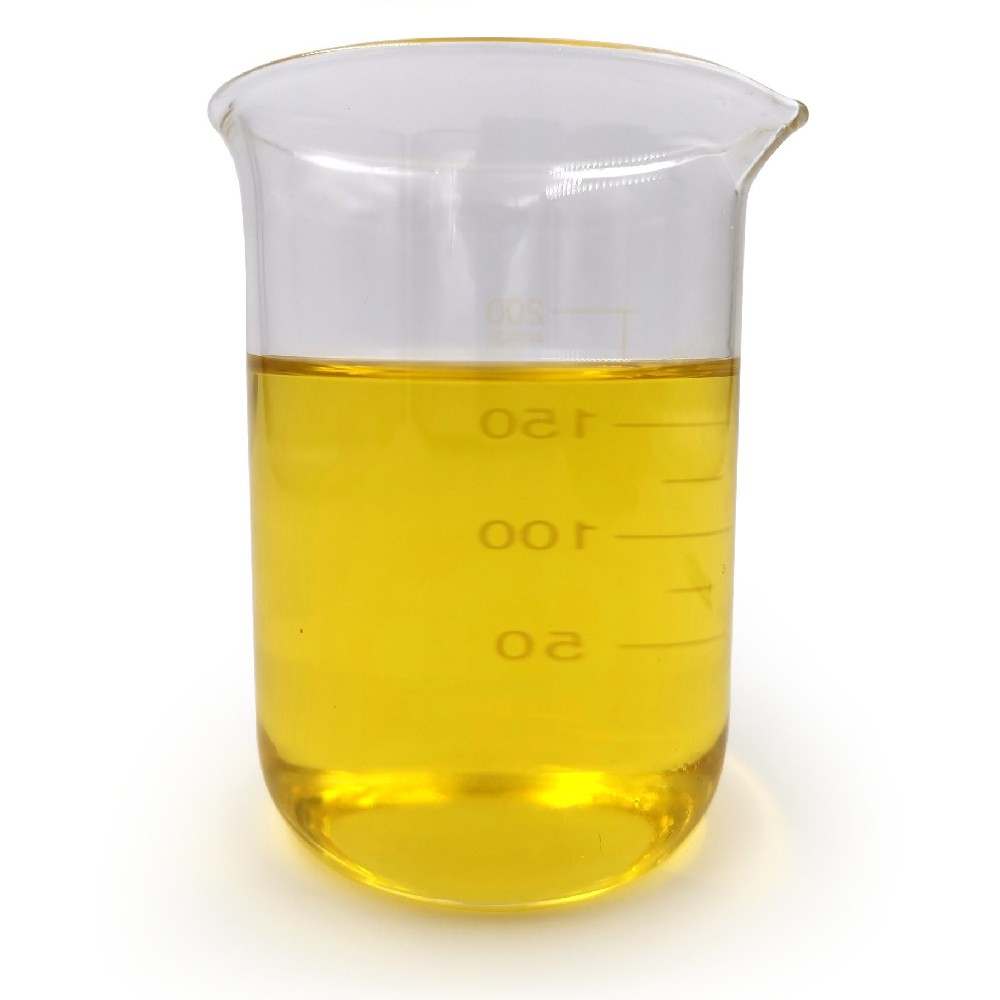
Pyruvic acid CAS 127-17-3
CAS number:127-17-3
molecular formula:C3H4O3
molecular weight:88.06
EINECS number:204-824-3
English synonyms
2-oxo-propanoicaci;CH3COCOOH;Propanoic acid, 2-oxo-;PYRUVIC ACID, GR 99%;ACID PYRUVATE;PyruvicAcidForSynthesis;PyruvicAcid,FreeAcid;Pyruvic acid, extra pure, 98%
Related categories
Biochemical reagents; synthetic flavors; organic chemical raw materials; cell biology-cellular oxidative stress; reference substances; food additives; edible flavors (flavor enhancers); natural equivalent flavors and artificial flavors; benzimidazole fungicides; pesticide intermediates ;Fungicide intermediates;Carbonyl compounds;Pharmaceutical intermediates;Flavors and fragrances;General reagents;Carboxylic acids;Organic chemical raw materials;Raw materials;Standard products-Chinese medicine standard products;Chemical intermediates;Standard products;Chemical materials;Chinese medicine reference substances;Organic Intermediates;Additives;Chemical Materials;Pharmaceutical Materials;Inorganic Chemicals;Flavours and Fragrances;Liquid;PyruvicAcidSeries;Nutritional Supplements;Clinical Testing Standard Materials
Introduction
Pyruvate is a component of the human body, which is mainly involved in the metabolism of sugar and fat in the human body, and is also one of the intermediate products of carbohydrate metabolism.
Chemical properties
| Melting point | 11-12 °C (lit.) |
| Boiling point | 165 °C (lit.) |
| Density | 1.267 g/mL at 25 °C (lit.) |
| Vapor Pressure | 1.72hPa at 25℃ |
FEMA | 2970 | PYRUVIC ACID |
| Refractive index | n20/D 1.428(lit.) |
| Flash point | 183 °F |
Storage conditions | 2-8°C |
| Solubility | Miscible with chloroform and methanol. |
| Shape | Liquid |
| Acidity coefficient(pKa) | 2.39(at 25℃) |
| Color | Clear colorless to light yellow or amber |
| pH value | 3.11(1 mM solution);2.38(10 mM solution);1.79(100 mM solution); |
Merck | 14,8021 |
JECFA Number | 936 |
BRN | 506211 |
| Stability | Stable. Combustible. Incompatible with strong oxidizing agents, strong bases. Refrigerate. |
InChIKey | LCTONWCANYUPML-UHFFFAOYSA-N |
| dissociation constant | 2.49 at 25℃ |
| CAS database | 127-17-3(CAS DataBase Reference) |
Colorless to amber viscous liquid with acetic acid-like aroma and pleasure. Shaanxi sour, with a spicy slightly sweet taste. Melting point 12~14 ℃, boiling point 164 ℃ (decomposition), flash point 82 ℃. Relative density (d415) 1.267. Miscible in water, ethanol and ether. Even if it contains trace impurities, it is easy to darken and decompose, so it should be stored in a high-purity airtight.
Natural products exist in sucrose fermentation broth and mint.
Use
● GB 2760--1996 stipulates that it is allowed to use spices for food.
● Pyruvate is an intermediate for the fungicide thiabendazole.
● For organic synthesis and biochemical research.
● Used as raw material for medicine and food additive
● Biochemical Research. Identify primary and secondary alcohols. Color developer for the determination of aliphatic amines. Determination of transaminases.
● It is the main raw material for the production of tryptophan, phenylalanine and vitamin B, the raw material for the biosynthesis of L-dopa, and the starting agent for ethylene polymers.
Production method
● It is derived from the reaction between tartaric acid and potassium pyrosulfate. First mix the tartaric acid and potassium pyrosulfate thoroughly, put it into a glass-lined reaction pot, heat it to about 180 ℃ in an oil bath, the solid begins to melt, and a large amount of foam rises. Start the stirrer to break up the foam to prevent overflow, and then When the temperature is raised to 220°C, the pyruvic acid will be evaporated, and the oil temperature will be kept at 245°C until the pyruvic acid is evaporated.
● The preparation methods are as follows.
Prepared from tartaric acid
Tartaric acid is obtained by dehydration and carbon dioxide in the presence of potassium bisulfate.
Prepared from dichloropropionic acid
The 2,2-dichloropropionic acid and 10% NaOH solution are refluxed, the pH of the final reactant is 2.5, cooled, evaporated to remove water, diluted with H2SO4 to form a sticky acid, and distilled under reduced pressure to obtain the product .
Oxidation with ethyl lactate followed by hydrolysis
The oxidation of ethyl lactate can be carried out by gas phase oxidation or liquid phase oxidation to obtain pyruvic acid, and manganese dioxide and hydrogen peroxide can also be used as oxidants for oxidation, and the obtained ethyl pyruvate can be hydrolyzed to obtain the product.
Acrylate oxidation followed by hydrolysis
The product is obtained by oxidizing acrylic acid or its ester with H2O2 in the presence of catalyst Cr or V compound.
Glucose as raw material for fermentation
Glyoxal oxidation
Pyruvaldehyde can be obtained by gas-phase oxidation with 1,2-propanediol, and further with methanol in the presence of nickel phosphate catalyst and gas-phase oxidation with oxygen to obtain the product.
Among them, the method (3) and the method (5) can be industrialized.
● It is obtained by distillation of tartaric acid in the presence of dehydrating agent potassium hydrogen sulfate and then vacuum rectification.
From acetyl chloride and potassium cyanide to generate nitrile, and then derived from acid hydrolysis.
Team Presentation

